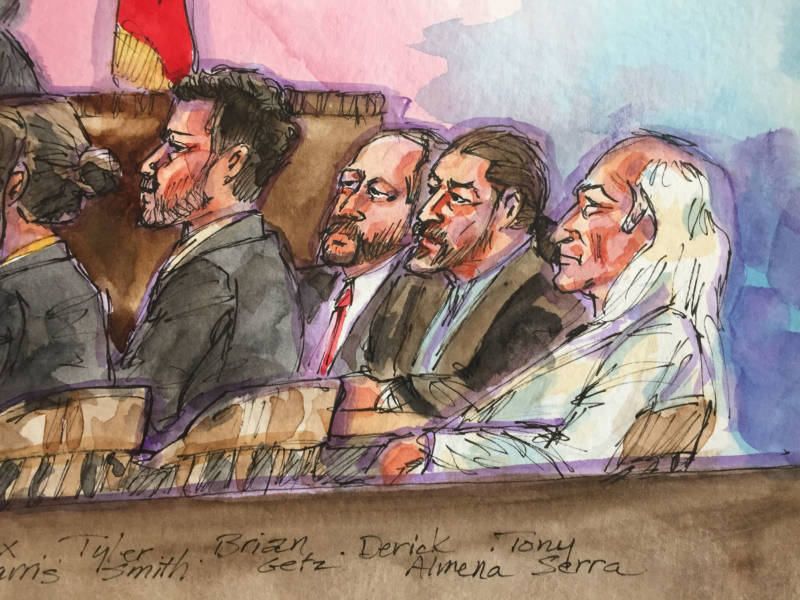Bates said that as an arts space, people brought in wooden materials, solvents, paints, power tools and other equipment, making walls made out of non-traditional materials to create residential spaces. No sheetrock was used, which could have slowed a fire.
Serra also said Wednesday a number of agencies in the years leading up to the fire had passed through the building, including the Oakland Fire Department, Oakland Police Department, Alameda County Sheriff's Office and Child Protective Services. He said they had never found safety issues in the warehouse.
"And they never told him that it was a fire hazard," Serra said outside court. "They never red-tagged him. They never gave him an eviction notice. They didn’t give him any kind of notice that said ... if you don’t fix this up, get out."
During his opening statement, Serra said that CPS had been in the building at least six times before the fire, and while they weren't experts in fire prevention, he said they were trained in areas of safety and security and hadn't mentioned any hazards.
Serra also presented Almena as an individual not seeking profit, power or prestige at the Ghost Ship. He described Almena as "100% artist" and that the building was "his vision, something beautiful. It was something that was awesome."
He said Almena had procured the building in order to display his art collection, acquired during his travels with his wife around the world. Serra called the Ghost Ship a museum full of religious art.
"You could be looking at photos of the Louvre itself," Serra said as he presented two photos of the interior of the warehouse from some time before the fire.
Serra closed his statement by placing a blown-up photo of Almena, his wife and three kids on an easel before the jury.
"Art and family were paramount," Serra said.
Outside court, following opening statements, Serra said: "I wanted to show my client in his best light. I wanted to show that he is a skilled, consummate artist, and that he created Ghost Ship as an outreach forum to the community."
Testimony in the trial is expected to begin Monday, May 6, in Alameda County Superior Court in Oakland.

